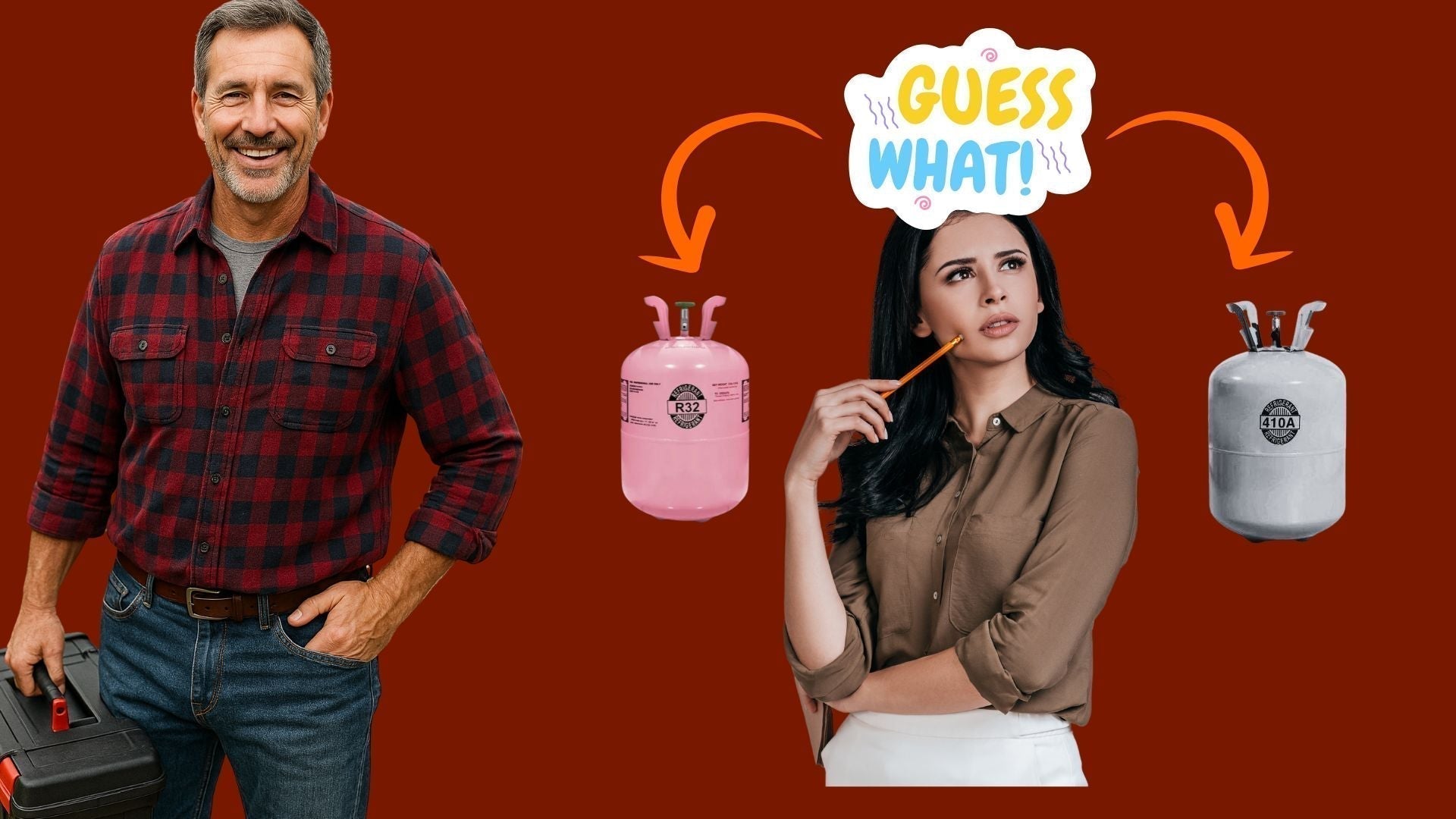Why You’re Hearing More About R-32
If you’ve been shopping for an air conditioner lately, you’ve probably come across the term R-32 refrigerant. You might also be wondering what happened to R-410A, the stuff that used to be in just about everything.
Here’s the deal: The HVAC world is going through a major refrigerant transition, and R-32 is at the center of it. Why? It’s more efficient, better for the environment, and easier to work with.
The Goodman 3 Ton 15.2 SEER2 R-32 System is part of that new wave—and it's built for long-term value.
R-32 vs. R-410A: Quick Comparison
| Feature | R-410A | R-32 |
|---|---|---|
| Global Warming Potential (GWP) | ~2,088 | 675 |
| Energy Efficiency | Good | Better |
| Refrigerant Class | A1 (non-flammable) | A2L (mildly flammable) |
| Charge Size | Larger | Smaller |
| Repair Costs | Higher | Lower (less refrigerant needed) |
| Phase-Out Status | Being phased out | Here to stay (for now) |
Why GWP Matters (Even If You’re Not an Environmentalist)
You don’t have to be an eco-warrior to care about global warming potential (GWP). If you’re a homeowner, it affects your wallet.
Here’s why:
-
R-410A has 3x the GWP of R-32. That means if your system leaks, you’re releasing more heat-trapping gas into the air—and possibly paying higher fines or fees down the line.
-
The U.S. is phasing out R-410A. It’s already restricted in Europe and parts of Canada.
-
As supply tightens, R-410A prices will spike. We’re already seeing this happen in some states.
R-32, by comparison, offers a lower-impact, longer-term solution, and manufacturers like Goodman are leaning into it hard.
Check out Daikin’s overview of R-32, which lays out why they adopted it across global markets years ago.
What About the Flammability of R-32?
Let’s talk about the elephant in the room: R-32 is classified A2L, which means it's mildly flammable.
Now, before you panic, know this:
-
A2L doesn’t mean your house is going to explode.
-
R-32 needs very specific conditions to ignite—conditions that are almost never met during normal operation.
-
Systems using R-32 are engineered with safeguards like pressure sensors, ventilation design, and refrigerant leak detection.
Don’t just take my word for it—AHRI confirms that A2L refrigerants like R-32 are safe when handled by trained professionals.
Bottom line? If your system is installed properly, R-32 is just as safe as any other modern refrigerant.
Why Mike Picked R-32 for His House
When I was upgrading my own HVAC setup, I looked at everything: system cost, long-term savings, refrigerant lifecycle, safety, you name it.
And I went with a unit using R-32—just like the Goodman 3 Ton 15.2 SEER2 R-32 System.
Here’s why:
-
It uses less refrigerant to do the same job.
-
It's more efficient than the R-410A system it replaced.
-
I won’t be scrambling for replacement parts or refrigerant when R-410A gets fully phased out.
If you're planning to stay in your home for the next 10–15 years, R-32 is a safer bet.
Mike’s Bottom Line
If you’re buying an air conditioner today, don’t settle for outdated tech.
R-32 offers:
-
Better efficiency
-
Lower global warming impact
-
Smaller refrigerant charge (so cheaper repairs)
-
A longer system lifespan in a world that’s moving fast on regulations
You wouldn’t buy a phone from 2010. Don’t buy an AC system with 2010 refrigerant, either.
Look for a modern, high-SEER system with R-32—like this one from Goodman. It’s not just about saving the planet. It’s about saving yourself money and stress down the line.
My Next Topic would cover: How to Make Your HVAC System Last Longer: Real Advice from Mike







